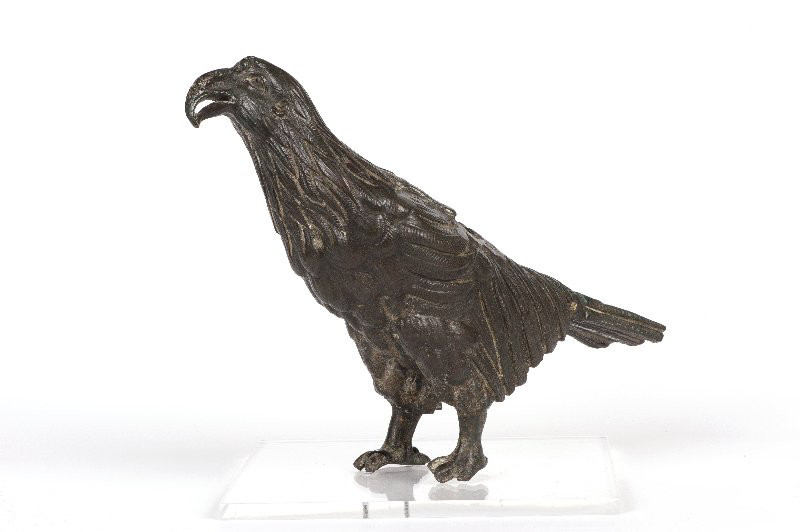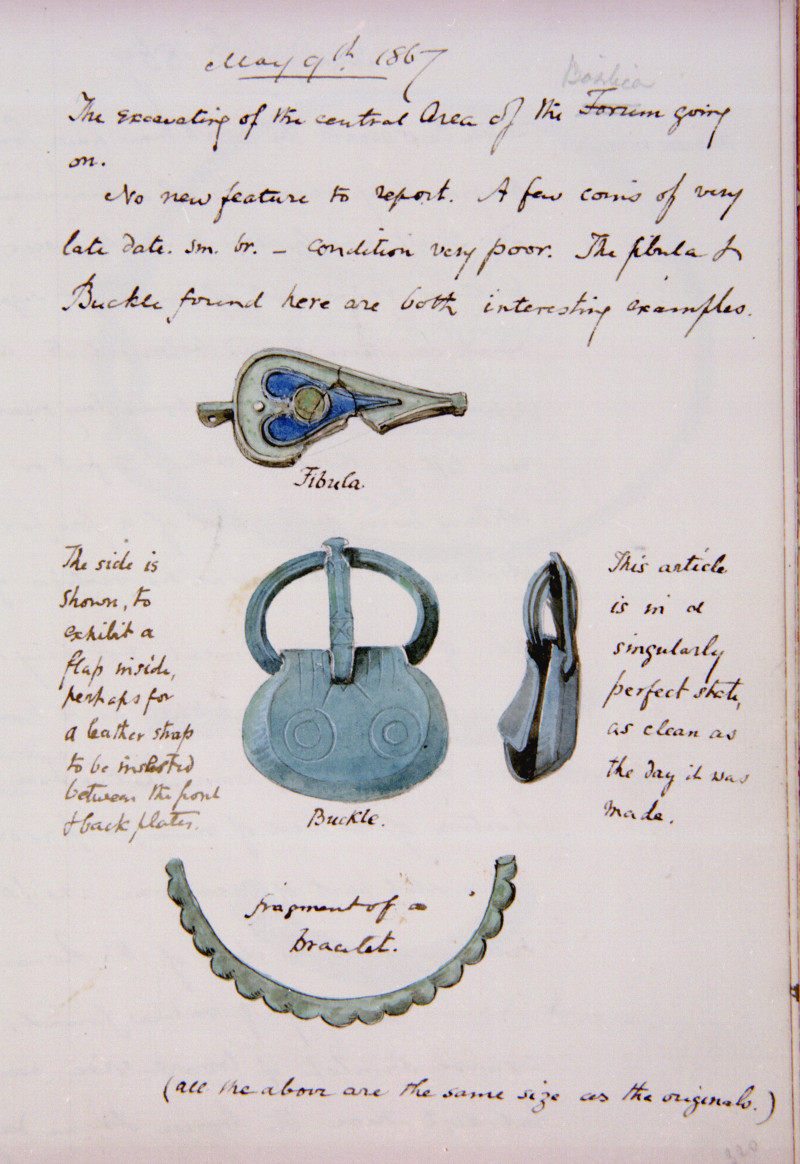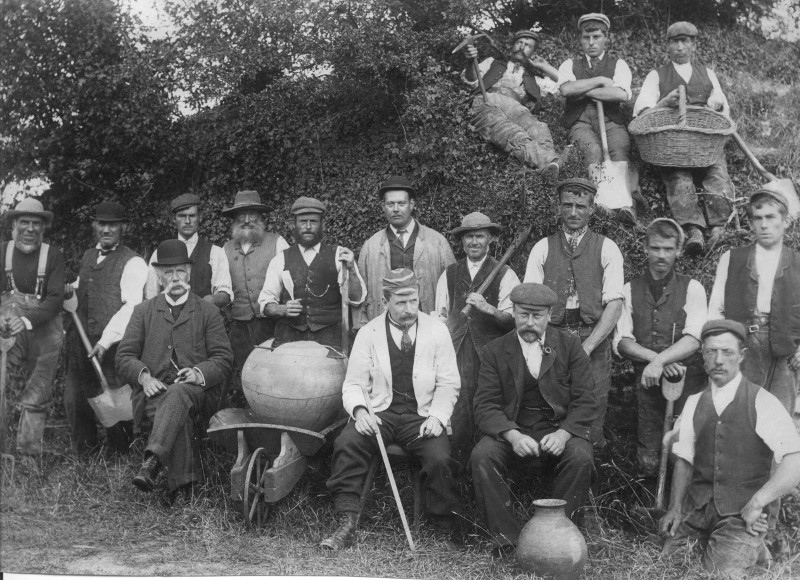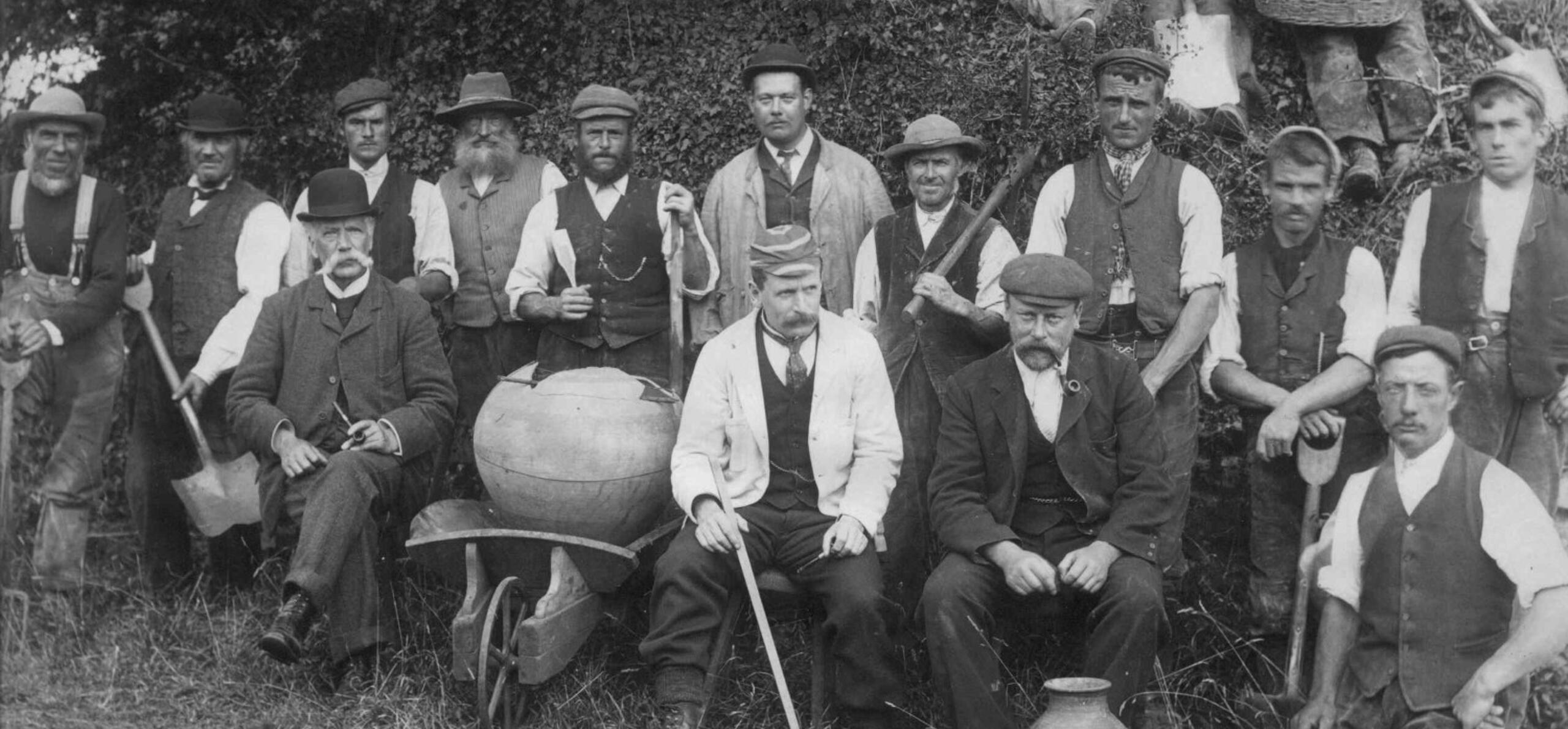You might not expect to stumble across towering flint walls in the Hampshire countryside. However, these are the remains of an ancient Roman town, Calleva Attrebatum. The site became abandoned when the Romans left Britain in the 5th century, and the once flourishing Calleva was never developed.
In this blog, learn about the history of the Silchester excavations within and beyond the mighty Roman walls. Discover the internationally important Silchester Collection that we keep at Reading Museum, and learn how you can explore these extraordinary objects in our galleries today.

The iconic bronze eagle found in the forum basilica by Reverend Joyce on the 9th October 1866. (REDMG : 1995.4.1)
The majority of objects in our Silchester Collection came from excavations directed by the Reverend James G. Joyce from 1864 to 1878, and by the Society of Antiquaries from 1890 to 1909. Reverend Joyce meticulously recorded his work in a three-volume journal, which is now in the Reading Museum collection. Today, they are displayed across the Silchester Gallery, the Silchester Annexe, and the Atrium.

A page from Reverend Joyce’s Journal dated the 9th May 1867 with illustrations and comments about a number of objects found in the Forum. (REDMG : 1934.2.1)
The Society of Antiquaries uncovered the whole area within the Roman walls across a distance of around 40 hectares. Their work revealed a regular street grid and building foundations, which quickly revealed all aspects of life across the Roman town: personal, social, religious, commercial, and official.
The breadth and variety of artefacts that were discovered range from hundreds of pieces of complete Roman pottery vessels to iconic objects like the Silchester Eagle, the inspiration of the popular children's book The Eagle of the Ninth by Rosemary Sutcliff.
The Silchester Collection is the most important collection from a Roman town in Britain. It is consulted widely by scholars both in Britain and aboard.
The Silchester excavations in photographs
The early excavations at Silchester were meticulously documented across more than 600 photographs, which today are kept within our photographic archive. These include the official site photographs together with more casual snapshots, often with personal comments written on the back. Most of the images are of the Society of Antiquaries excavations, but twenty-seven depict earlier investigations by Reverend Joyce. These photographs are an invaluable pictorial record of how these 19th century excavations were undertaken and managed.

A photograph of the Jubilee Pot (REDMG : 1995.1.88) in a wheelbarrow with a group of excavators (REDMG : 2002.34.109).
Silchester today
Today, archaeologists at the University of Reading continue to study the Silchester site. New discoveries have been made about life in Calleva prior to the Roman occupation, as well as about the trade links of the people that lived there.
In 2022, we are planning to redevelop our Silchester Gallery, sharing new insights into the remarkable history of Calleva and the many artefacts within the Silchester Collection. To help with this, it would be invaluable if you could please consider completing our short survey. Your feedback and comments are hugely appreciated. Thank you.
To see the Silchester Collection in person, plan your free visit to Reading Museum.





